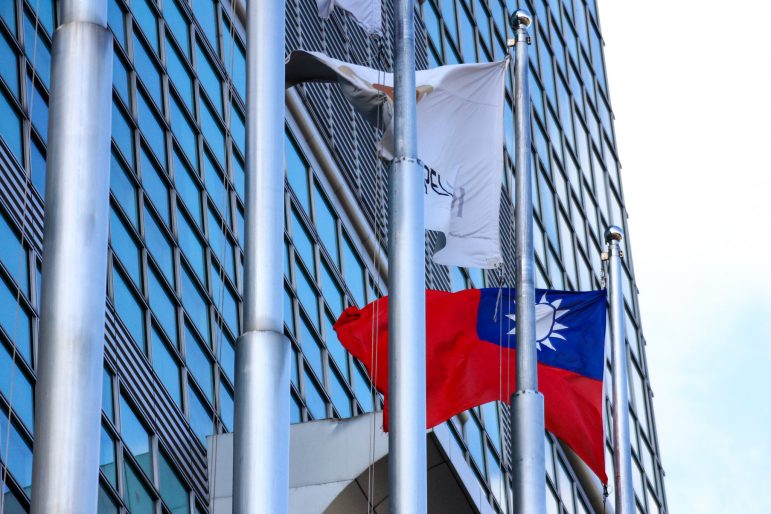While things appear to be inching better regarding COVID-19, we still are hearing far too many stories of countries experiencing new variants of the coronavirus. Furthermore, there are still news reports telling us of places where the number of cases and deaths are rising.
Missing are the success stories of countries where the virus either never took hold or had a significant impact. Some might think we are discussing Australia and New Zealand. They appear to have conquered the disease, reporting few new cases.
Yet these two countries did have lockdowns. As in many parts of the world, entire cities were closed for months at a time.
However, there is one country that has been quite successful in dealing with COVID-19 without the need for lockdowns. That country is Taiwan, just 81 miles from China, the epicentre of the pandemic.
Now, international public health authorities are taking a close look at Taiwan. How was this island of 23 million people able to protect its citizens and even more than that, allow them to go on about their business — working in offices and going to schools — as usual?
Some of their success is attributed to early and strict border controls: the country banned foreigners from visiting, and those that were able to enter were subjected to mandatory quarantine. And, virtually from the start, citizens were required to wear masks. Because wearing masks is not uncommon in many parts of Asia, this measure was relatively easy to enforce.
Additionally, Taiwan did the following:
- Required that office and school schedules be adjusted to help minimize the number of people in a facility at one time.
- Developed health monitoring systems; citizens were to report any respiratory symptoms immediately and then self-isolate.
- Implemented routine and random temperature checks.
- Installed hand sanitizers in all facilities and encouraged everyone to wash their hands frequently.
- Reconfigured work and school spaces so that there was more space between people and installed partitions around work and study areas.
If all this sounds familiar, it should. Most of these same steps were undertaken in Canada and other countries around the globe. However, these other countries were far more seriously impacted by COVID-19.
What did Taiwan do differently?
According to Mike Sawchuk, a Canadian consultant working with the professional cleaning and facilities management industries, one key difference was that Taiwan “knew when it was time to act.”
According to Sawchuk, the 2003 SARS (Severe Acute Respiratory Syndrome) outbreak seriously impacted the country. “They were caught off guard. But as soon as they heard reports out of China of an unusual flu-type outbreak, they took significant steps immediately.”
In other words, they implemented many of the measures mentioned above sooner than almost any other country in the world.
Taiwan also activated its Central Epidemic Command Center (CECC), created in 2009 when the country was concerned about the swine flu. Few countries around the world have such a centre, which once again makes Taiwan stand out. But even more, this command centre has teeth. It works with the military to boost such things as mask-wearing, crowd control, and to ensure people possess and wear other forms of protective gear.
Another factor, according to observers, was that the country was one of the first to discuss openly the potential dangers of the disease. “They started daily briefings sometimes twice per day, long before similar briefings were happening in Canada or the U.S.,” says Sawchuk. “They were very transparent about the disease, and [the briefings] helped encourage the people of Taiwan to trust their government.”
Enhanced cleaning
Another step the country took as soon as news reports about COVID-19 started coming out of China was to actively improve and enhance cleaning protocols.
“Surfaces such as tabletops, chairs, floors, restrooms and restroom fixtures were cleaned more frequently and thoroughly,” says Drew Bunn with Kaivac Canada, manufacturers of cleaning systems designed to help stop the spread of infection. “Often this was followed up by regular inspections by building managers and facility administrators.”
While sanitizers and disinfectants were part of the enhanced cleaning protocols, Taiwan and Hong Kong learned from SARS that overuse of these products can prove detrimental to the health of people and the environment. Indeed, just recently, the U.S. Centers for Disease Control and Prevention (CDC) reported concerns about the excessive use of these products. Since the pandemic began, according to the CDC, there has been “an increase in poisonings and injuries from [the] unsafe use of disinfectants.”
What many facilities in Asia and around the world have done to improve cleaning effectiveness since the beginning of the pandemic, without resorting to the excessive use of disinfectants, is to turn to spray-and-vac type cleaning systems. Studies report that at least one such system is 30 times more effective at removing surface soils when compared to traditional cleaning methods using sprayers and rags.
Further, while disinfectants should be used when and where needed and properly, “studies have shown some spray-and-vac [cleaning] systems can remove pathogens from surfaces without the use of disinfectants,” adds Bunn.
Overall, it appears the reason Taiwan was so successful at blunting the worst of COVID-19 is that they learned from experience.
“Whether it involved mask-wearing, work scheduling, or cleaning, they acted fast and effectively, and it paid off,” Dunn says. “I suspect Canada will take similar steps and be better prepared should we experience something like this ever again.”
Robert Kravitz is a frequent writer for the professional cleaning industry.









